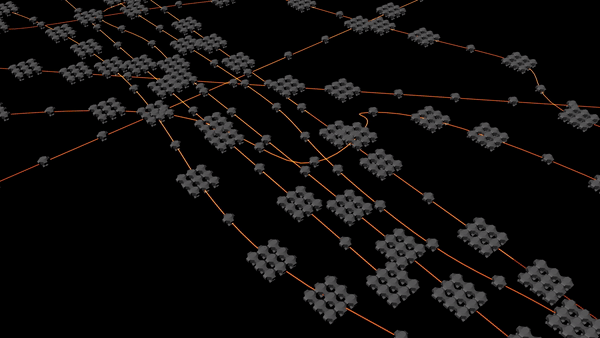The goal of the project was to create a future scenario present in 2050 with the topic of Mobility and movement.
SCENARIO:
What if people decided to stay in the city even after the sea level rise has changed their landscape?

The city which was chosen to explore this scenario was Mumbai. Mumbai has already been exposed to wild floods and rains and the city’s corporation finds a way to remain in the city where the old Mumbai existed as 7 islands.
The low lying areas of the Mumbai where there is potential, are the areas where most of the population travel to and fro for work. The future of the Mumbai transport system needs to balance to adapt to the rising water levels in the future.
How will a city like Mumbai which has a population of 18.4 million in 2019, will be able to support the transport needs of a projected 36.4billion population in 2053? Even if the future is moving towards an individual based transport system how will that system work in an informal economy like Mumbai, where people prefer public over private transportation. Mumbai city’s transport needs have always kept changing and the water level rise scenario will not be any different to that.

Most of Mumbai’s informal sector uses public transport.
The informal sector demonstrates people’s capacity to improvise, self-organize and create value regardless of circumstance and institutional wellbeing. As people self-coordinate around common goals, they show that improvisation, as a means of coping, can have structural implications that can be surprisingly sophisticated and robust.

The Dabbawalas(people who deliver lunch to people either from home or restaurants) alone constitute a huge network of 5000 delivery workers supplying food to more than 200,000 people


SWARM
Swarm is an automated self-drive system of Mumbai transport department for navigation of space and time which travels on both land and the water bodies.

The swarm boats use the multiple swimfin attached to the bottom of the swarm boats to move forward and will use a collective coordination of multi-robot systems to navigate and will help transporting the intense mumbai crowd. The VELOX robot tech will be installed under the swarm boats as a piezoelectric energy generator tool.


The swarm-bots use the technology the velox robots combined with swarm robots technology to create an advanced automated and co-ordinated transport system for Mumbai. Its navigation system is both route based and interaction based.




Storyboard:

The businessman is going to go from Worli to Dadar. He goes to the stop point where his usual travel-pod arrives and starts his trip and on the way he collects his Lunch box from Dabbawala using the travel card. Meanwhile the dabbbawala delivers it to the businessman and moves to the public transport system where his swarm card alerted him about the arrival of his customers to his delivery zone. He takes his pod, moves towards the public system and the pod docks itself on the entry of the informal sector entry. He moves around the pods checking the location of the customer and delivers to everyone and comes back and the pod detaches itself. He goes and rests inside his pod and a ray of sunlight hits his face as he waits for the next notification from his SWARM card.





A barrier around the city to generate energy for the public transportation system.
The energy resource is for the needs of these pods using a piezoelectric barrier system.
Swarm is a project of IaaC, Institute for Advanced Architecture of Catalonia developed at the Master in Advanced Architecture in 2019 by:
Students: Magesh Kumar Vellur Mathi, Manojraj Manachanallur Raju Periyasamy
Faculties: Mathilde Marengo, Ece Tankar, Carmen Aguilar